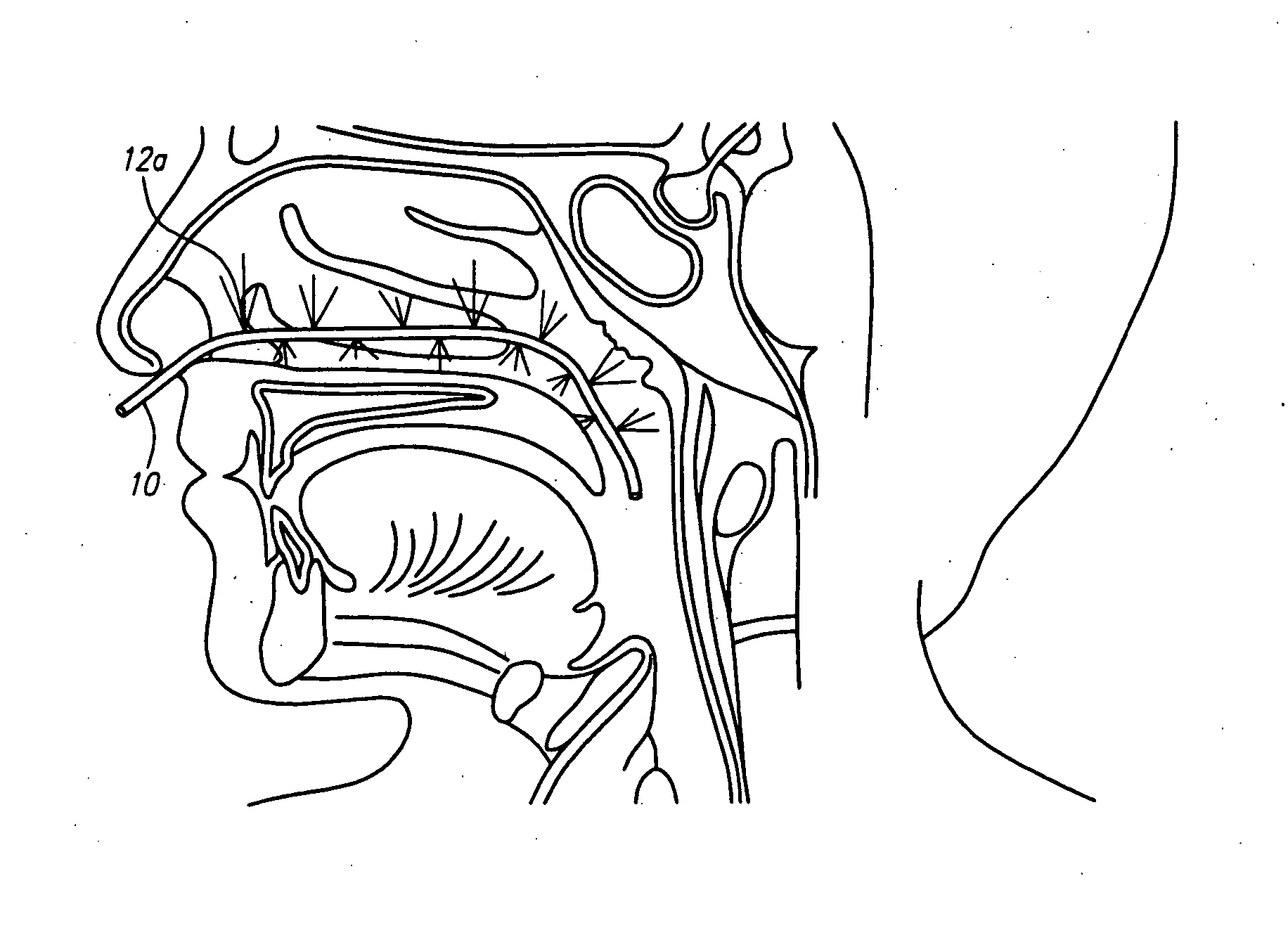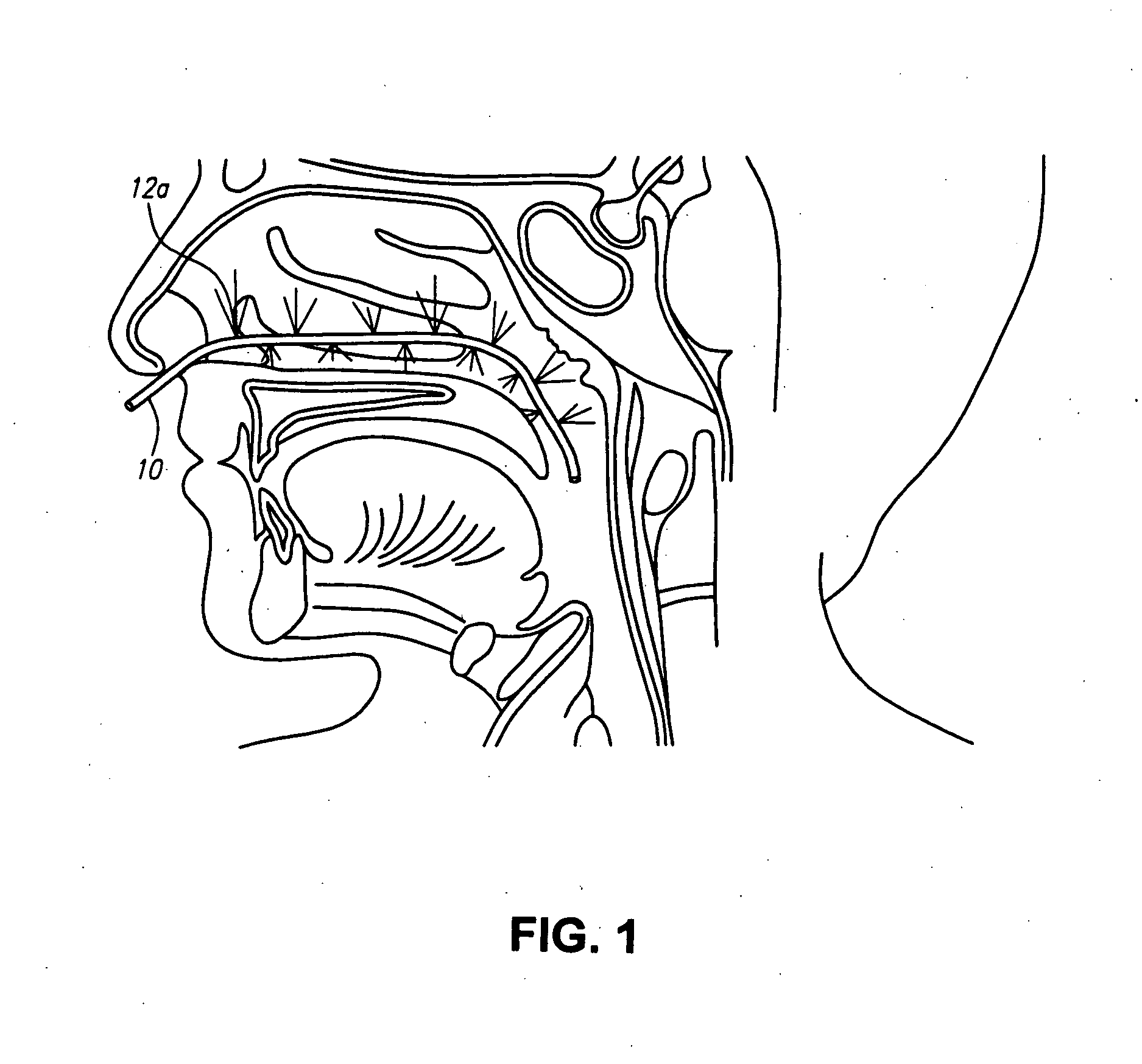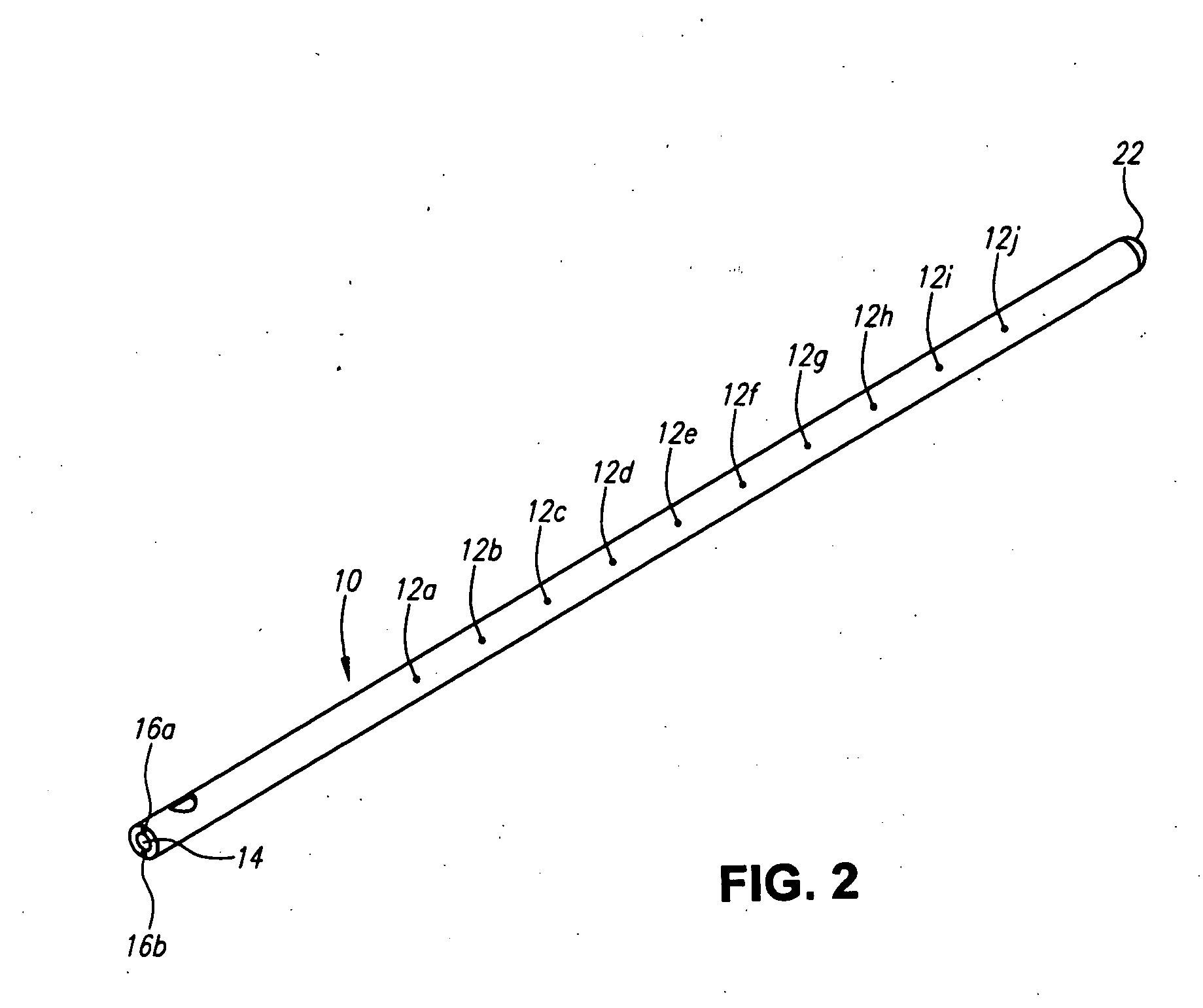Methods and devices for non-invasive cerebral and systemic cooling
a non-invasive, cerebral and systemic cooling technology, applied in the field of cerebral and systemic cooling, can solve the problems of severe cardiac performance depression, neurological deficit to irreversible damage, patients experiencing cerebral ischemia often suffering from disabilities, etc., to reduce cerebral perfusion, minimize neurologic deficits, and maximize cooling
- Summary
- Abstract
- Description
- Claims
- Application Information
AI Technical Summary
Benefits of technology
Problems solved by technology
Method used
Image
Examples
Embodiment Construction
Evaporative Cooling in the Nasal Cavity
[0125]FIGS. 1-3 illustrate nasal catheter 10 with multiple delivery ports 12a-m for non-invasive cerebral and systemic cooling of the nasal cavity. Nasal catheter 10 is operably sized to extend through the patient's nasal cavity and into the nasal pharynx and has a plurality of lumens 14 and 16a-b extending between the proximal and distal ends of catheter 10 for separately delivering a liquid and a compressed gas. Nasal catheter 10 also has rounded sealed tip 22 on the distal end, which seals the distal end of lumens 14 and 16a-b and provides a smooth surface to avoid damaging sensitive tissues. FIGS. 4-7 depict several possible designs for the lumens of nasal catheter 10. FIG. 4 shows catheter 10 with a large, circular central lumen 14 that may be used for transporting the compressed gas through catheter 10 while one or more smaller lumen 16a-b may be used for transporting the liquid through catheter 10. In FIGS. 6-8, more complex, geometric...
PUM
| Property | Measurement | Unit |
|---|---|---|
| temperature | aaaaa | aaaaa |
| boiling point | aaaaa | aaaaa |
| boiling point | aaaaa | aaaaa |
Abstract
Description
Claims
Application Information
 Login to View More
Login to View More - R&D
- Intellectual Property
- Life Sciences
- Materials
- Tech Scout
- Unparalleled Data Quality
- Higher Quality Content
- 60% Fewer Hallucinations
Browse by: Latest US Patents, China's latest patents, Technical Efficacy Thesaurus, Application Domain, Technology Topic, Popular Technical Reports.
© 2025 PatSnap. All rights reserved.Legal|Privacy policy|Modern Slavery Act Transparency Statement|Sitemap|About US| Contact US: help@patsnap.com



